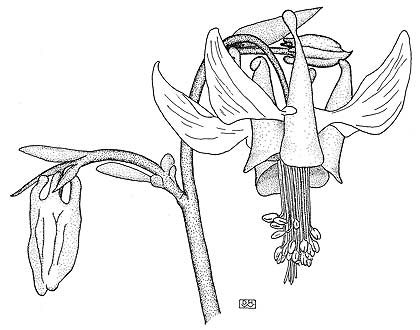
By David Wagner
 |
| Red columbine. Aquilegia formosa |
A wave of wildflower bloom moves up the mountains in June, each meadow having a later peak of flowering the higher up you go. It is interesting to follow the species that grow at all elevations, like bleeding hearts and columbines. Last month they bloomed on the valley floor. Come July, they open flowers on the Old Cascade ridge tops. The hummingbirds follow columbines up the hill. These graceful flowers, with deep nectar pockets and showy red colors, are classic flowers adapted specifically for hummingbird pollination. Who pollinates the bleeding heart is a mystery, who eats them is well known. Caterpillars of the Parnassian butterflies feed exclusively on bleeding heart.
Solstice is the day after Father’s Day, a time for special celebration. As Mother’s Day is close to May Day, traditional time for fertility festivals, in good sequence Solstice and Father’s day emphasize nurturing and maturing. The gardener should have all the big plants in the ground, tomatoes, squash family, peppers and egg plant. Remember that if you want these plants to feed you, first you must feed them. Fertilizer is a low-risk growth investment.
Just before the moon sets early Saturday morning, June 26, we will be able to see a partial lunar eclipse. Lunar eclipses are more common than solar eclipses but they are few this year. The single total lunar eclipse of the year will be visible only in the southern hemisphere. To see the stars, it is best to head out on clear nights during the new moon.
David Wagner is a botanist who has lived in Eugene for more than 30 years. He teaches mosses and leads plant walks. He may be reached at fernzenmosses@me.com